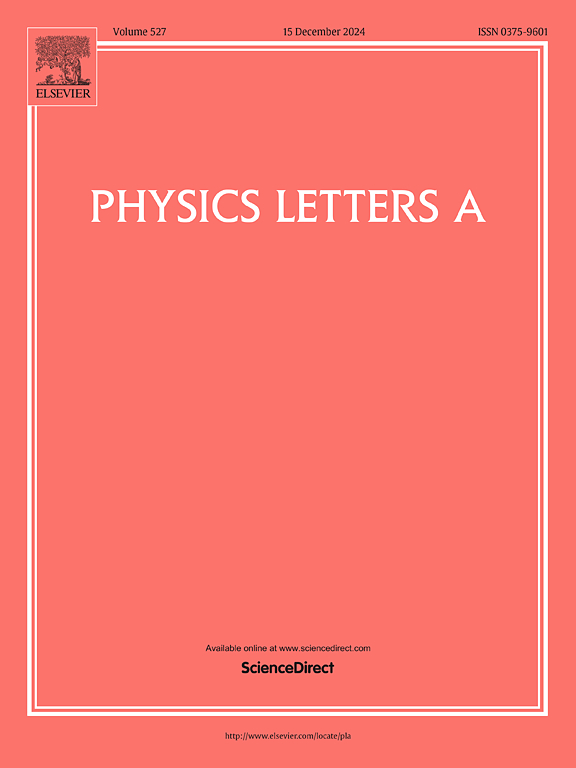Topological Anderson insulator phases in one dimensional quasi-periodic mechanical SSH chains
IF 2.3
3区 物理与天体物理
Q2 PHYSICS, MULTIDISCIPLINARY
引用次数: 0
Abstract
In this paper, we explore the transition between different topological phases, in a Su-Schrieffer-Heeger (SSH) model composed of springs and masses in which the intracellular Aubry-André disorder modulates the spring constants. We analytically compute the eigenvectors and eigenvalues of the dynamical matrix for both periodic and fixed boundary conditions, and compare them with the dispersion spectrum of the original tight-binding SSH model. We observe the presence of a topological Anderson insulating (TAI) phase within a specific range of quasi-periodic modulation strength and calculate the phase transition boundary analytically. We analyze the localization properties of normal modes by examining the inverse participation ratio (IPR) of eigenstates, of the dynamical matrix, and the corresponding fractal dimension associated with quasiperiodic modulation. We also examine the stability of the TAI phase across a range of modulation strengths and comments on the presence of mobility edge that separate localized modes from non-localized ones. We expand our analysis of analytically calculating the expression for the anomalous mobility edge in the context of Aubry-André modulation of intra-cellular spring stiffness. This involves computing the Lyapunov exponent of all the eigenmodes related to intra-cellular dynamics. We demonstrate that specific analytical techniques are required to obtain an exact expression for the mobility edges when considering Aubry-André modulation in intra-cellular spring stiffness.
求助全文
约1分钟内获得全文
求助全文
来源期刊

Physics Letters A
物理-物理:综合
CiteScore
5.10
自引率
3.80%
发文量
493
审稿时长
30 days
期刊介绍:
Physics Letters A offers an exciting publication outlet for novel and frontier physics. It encourages the submission of new research on: condensed matter physics, theoretical physics, nonlinear science, statistical physics, mathematical and computational physics, general and cross-disciplinary physics (including foundations), atomic, molecular and cluster physics, plasma and fluid physics, optical physics, biological physics and nanoscience. No articles on High Energy and Nuclear Physics are published in Physics Letters A. The journal''s high standard and wide dissemination ensures a broad readership amongst the physics community. Rapid publication times and flexible length restrictions give Physics Letters A the edge over other journals in the field.
 求助内容:
求助内容: 应助结果提醒方式:
应助结果提醒方式:


